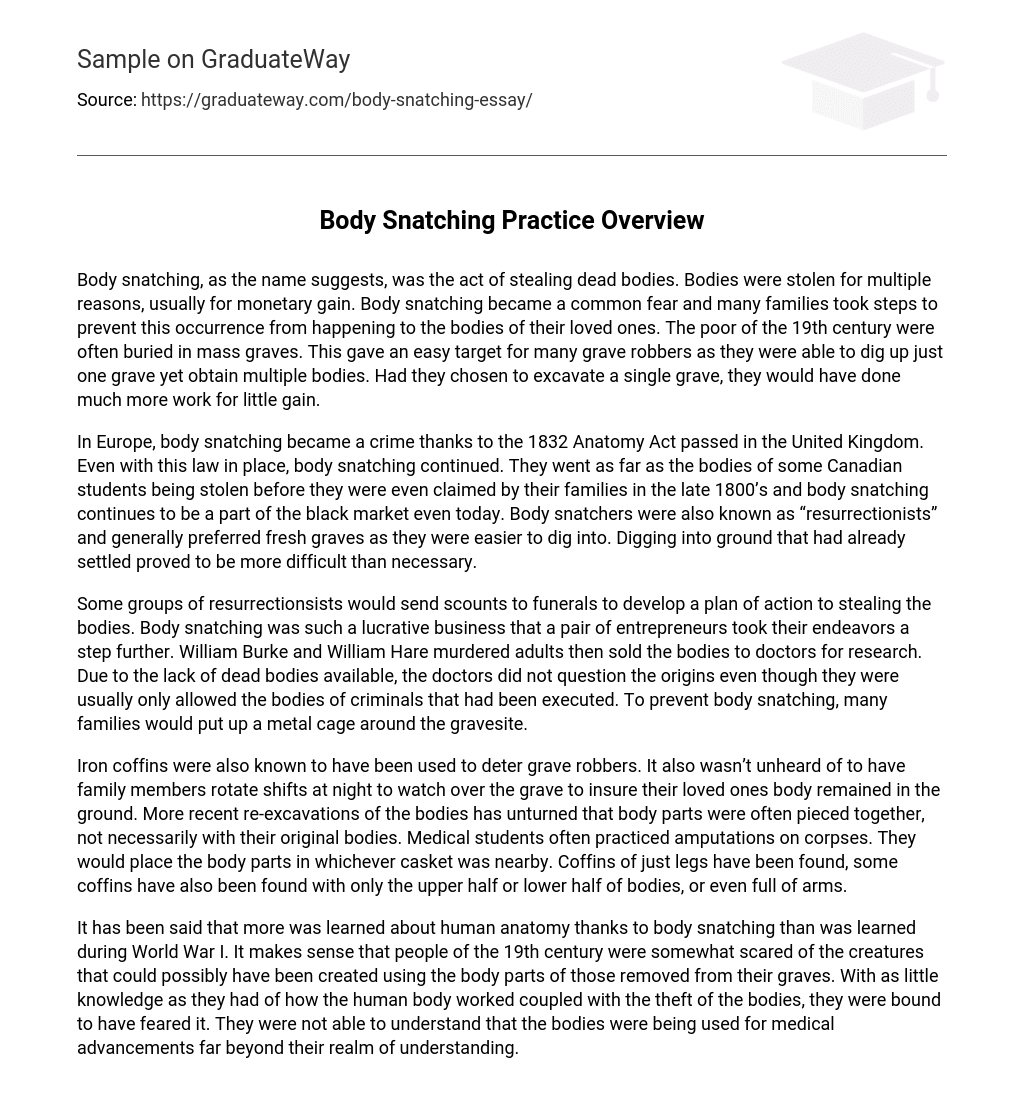Body snatching, as the name suggests, was the act of stealing dead bodies. Bodies were stolen for multiple reasons, usually for monetary gain. Body snatching became a common fear and many families took steps to prevent this occurrence from happening to the bodies of their loved ones. The poor of the 19th century were often buried in mass graves. This gave an easy target for many grave robbers as they were able to dig up just one grave yet obtain multiple bodies. Had they chosen to excavate a single grave, they would have done much more work for little gain.
In Europe, body snatching became a crime thanks to the 1832 Anatomy Act passed in the United Kingdom. Even with this law in place, body snatching continued. They went as far as the bodies of some Canadian students being stolen before they were even claimed by their families in the late 1800’s and body snatching continues to be a part of the black market even today. Body snatchers were also known as “resurrectionists” and generally preferred fresh graves as they were easier to dig into. Digging into ground that had already settled proved to be more difficult than necessary.
Some groups of resurrectionsists would send scounts to funerals to develop a plan of action to stealing the bodies. Body snatching was such a lucrative business that a pair of entrepreneurs took their endeavors a step further. William Burke and William Hare murdered adults then sold the bodies to doctors for research. Due to the lack of dead bodies available, the doctors did not question the origins even though they were usually only allowed the bodies of criminals that had been executed. To prevent body snatching, many families would put up a metal cage around the gravesite.
Iron coffins were also known to have been used to deter grave robbers. It also wasn’t unheard of to have family members rotate shifts at night to watch over the grave to insure their loved ones body remained in the ground. More recent re-excavations of the bodies has unturned that body parts were often pieced together, not necessarily with their original bodies. Medical students often practiced amputations on corpses. They would place the body parts in whichever casket was nearby. Coffins of just legs have been found, some coffins have also been found with only the upper half or lower half of bodies, or even full of arms.
It has been said that more was learned about human anatomy thanks to body snatching than was learned during World War I. It makes sense that people of the 19th century were somewhat scared of the creatures that could possibly have been created using the body parts of those removed from their graves. With as little knowledge as they had of how the human body worked coupled with the theft of the bodies, they were bound to have feared it. They were not able to understand that the bodies were being used for medical advancements far beyond their realm of understanding.





